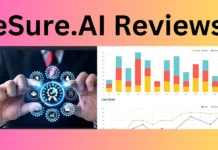Geospatial data is among the most fundamental elements of digital transformation, connecting disconnected data sets. The data can be used for a range of purposes such as development of digital land registers and advanced infrastructure planning gathering public records, sharing digitalization of records of cadastral origin. Geospatial data providers commit an enormous amount of effort, time and funds into the transformation of their services to ensure that they can benefit businesses, individuals as well as officials.
What is Geospatial Data Analysis?
Geospatial data is data that is connected to a specific place. It is usually recorded in terms of geospatial topologies and coordinates. The volume of this data is increasing exponentially due to the fact that it is created by computers and is generated by a vast array of devices including smartphones tablet computers, satellites, digital cameras, sensors, radars and different modes of transportation. With it becomes clear that the Internet of Things and Industrial Internet developments gain momentum as they gain momentum, the volume of geospatial information is growing faster, as are the applications.
This type of data is utilized in geographical information systems to create data, store, and analyze, and search for and export data with geographical references. The most crucial components of an GIS are attributes. This is, the extra information that comes with the GIS. It also has the concept of data layers, which are the combination of coordinates and attributes. A map, for instance, where objects are mapped can be considered a layer. Geospatial analysis is called spatial analytics. It’s utilized to answer questions regarding the world as it is — for instance, the current state of affairs at a particular point in time or a flow of change caused by diverse factors, modeling and forecasts.
The Value of Geospatial Analytics
The need for geospatial data analytics is very high in diverse fields. For instance, it could assist in visualizing social media activities in times of environmental emergencies by comparing tweets, posts or blog activity to a geographical location, experts can collect all the information needed to assist rescuers. Telecoms can make use of geospatial data to manage user outflows Social networks offer details of when a user is moving to a different area and is able to monitor the availability of the operator services within the region to provide a new phone or even a mini cellular station, before the customer chooses to switch service providers.
When they perform an analysis of spatial patterns, the companies can determine what their peak energy consumption could be, based on the geographic location and the equipment within the region. A few of the popular applications of geospatial data is obviously marketing and advertising. The capability to provide customers with the exact service while they are in immediate vicinity of the shop is a great chance for marketers. The importance of geospatial information analysis in the field of agriculture also needs to be acknowledged. It provides farmers across the world an opportunity to remotely monitor their fields and make data-based, reliable decision-making about future actions.
Types of Geospatial Data
Geo data is available in a variety of types, each with its own value when usedin the following ways:
Geographic Database — types of spatial data that allow visualization of data on maps.
Vector Data is the visualization of features or objects on the earth’s surface, in the form of lines, points and polygons.
Raster Data Raster Data is the visualisation of features or objects on Earth’s surface using pixels. It is usually used to describe satellite or aerial images.
Web Files — types of geodata storage and access that were created specifically to display and serve geographical features on the internet.
Multi-temporal is a kind of data that links time with geographic information that aids in monitoring changes in the climate context of place and time.
In general, the geospatial data analytics market is growing rapidly and provides more opportunities in various verticals, transforming the methods they collect, process and use the data needed.















